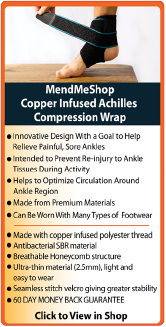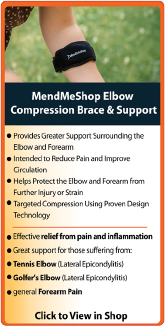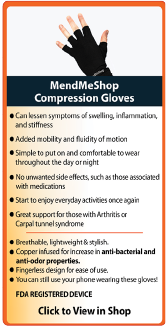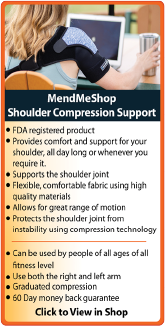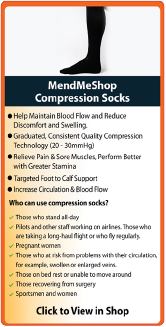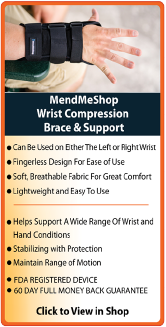|
|
Iliotibial Band (IT BAND) Tendonitis / SyndromeThe iliotibial band (IT band) is a band of fibrous tissue (fascia latae) that runs down the outside of your thigh from your hip and all the way down to your knee. It provides stability to the hip and knee and its job is to prevent the dislocation of both knee and hip joints. When the band becomes tight it compresses the tissue around the hip bone or the outside of the knee joint. This compression of the tissue affects the hip, leg muscles and the knee (reference: https://www.ncbi.nlm.nih.gov/pubmed/16996312" accessed 2021). Iliotibial band syndrome (ITBS) is a common condition in athletes, especially runners and cyclists, and occurs when the IT band becomes irritated, inflamed and tight. The IT band (also called the iliotibial band or iliotibial tract) is a thick, fibrous tendon that runs along the outside of each leg. These bands run from the iliac (crest of the pelvis), over the greater trochanter at the side of the hip, down the leg, and inserts on the outside of the knee at the top of the tibia (tibial tubercle). Each IT band works with the thigh muscles during flexion and extension of the knee to slow you down when running and helps provide stability to the knee joints. Excessive rubbing of the IT band over the tibial tubercle (bony prominence at the outside of the knee) is a common cause of the irritation that leads to inflammation, tightness and pain. Although the pain from ITBS usually occurs at the outside of the knee, soreness in the hip may also occur. Pain in the hip is usually caused by the IT band tightening and rubbing over the greater trochanter, the outer hip bone. The initial pain of ITBS is caused by the tightening, irritation, and inflammation in the IT band. As the IT band starts to heal, scar tissue begins to develop on the iliotibial tract. This scar tissue is tough and inflexible and it stops the muscles attached to the IT band from moving smoothly. This causes further pain at the knee and tightness is usually felt in the hip and down the leg to the knee. Symptoms of Iliotibial Band SyndromeIf you have iliotibial band tendonitis or IT band syndrome you may experience pain that starts gradually at the hip or knee. This discomfort usually is more noticeable after running. You'll notice most pain will happen or even increase during activities like walking, running, climbing stairs, running/walking downhill and even between training sessions. If left untreated you many experience increased pain with any weight-bearing activities or pain while resting your leg. Symptoms of ITBS in runners usually begin with pain developing during a run which subsides shortly after the run finishes. Pain continues to appear with every run eventually progressing to more constant pain while walking or going up or down stairs. Typical symptoms experienced are:
Causes of Iliotibial Band Syndrome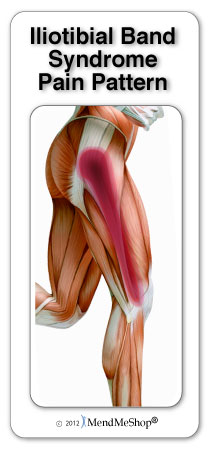 Iliotibial band (ITB) syndrome (ITBS) is common for people who participate in sports that require running or repetitive hip and knee movements (flexing and extending the hip/knee/leg). Sports such as long-distance running, cycling, tennis, soccer, skiing, weight lifting and aerobics can lead to IT band issues. Iliotibial Band tendonitis is also often referred to as an overuse injury. If you look at the bottom of your shoes you'll soon notice the uneven or excessive wear in certain spots. These wear patterns on the soles of your shoes show how your foot is striking the ground (your gait). If you are noticing excessive wearing of your shoes in certain places your gait (the way you walk) may be off. Wear patterns also may show if your foot is rolling inward or outward (pronation or supination). Your hip alignment or leg-length may also tighten your Iliotibial Band. Everything is connected in our bodies - the way you walk including the placement of your foot may depend on whether you have knee and/or hip issues and other injuries. Improper gait can cause IT band issues and an improper gait can happen due to a large number of factors including short leg syndrome (SLS), back problems, hip problems, knee and ankle problems and even improper footwear. If you are suffering from IT band pain you're probably also suffering from another injury in your hip, knee and/or foot or from a natural issue with your gait (flat-feet, fallen arches, over-pronation or short-leg syndrome). Risks of Contracting Iliotibial Band SyndromeThe risk of a person contracting iliotibial band syndrome can increase with any condition or activity that may cause excessive rubbing of the IT band, such as: 
Iliotibial Band Syndrome DiagnosisThe best way to diagnose this condition is with a quick visit to the your doctor or physical therapist for a physical examination of your hip, leg and knee. Your Doctor might have you perform a Noble Compression Test (a flexibility test) where they see how flexible your IT Band and hip flexors are. During this test your doctor or physical therapist will have you lay on your back and perform a few movements of your leg and hip to discover if there is inflammation in either area. Your doctor will do a physical examination which may include range of motion tests. He or she may arrange x-rays and/or an MRI. An x-ray will rule out calcification or bone spurs in the area. An MRI can identify the inflammation or damaged IT band. It can also determine if there is any other damage in the soft tissue neighbouring the iliotibial tract. Treating IT Band Syndrome (ITBS)Initial treatment of iliotibial band syndrome should focus on resting your leg and reducing the inflammation to help relieve pain. Do not train through the pain. It may be necessary to stop training for a week or two. Treating your iliotibial tract with cold compression and Circulation Boost will reduce the pain and inflammation so you can get back to training sooner. However, once the pain is gone it does not mean you are healed. Absence of pain generally means the swelling and inflammation is gone, but it takes quite a while for the underlying injury to heal. This is why you get flare ups after you start getting active again (once the pain is gone) - you are still injured and must heal the injury completely! Cold Compress or Ice Pack Cold Compression - Relief of Pain & SwellingWhen your IT band becomes inflamed and sore during a run, doctors recommend immediate treatment with cold. Cold is the safe and natural way to control pain and swelling while minimizing tissue damage. Frequent, cold treatments within the first 72 hours of the iliotibial tendon becoming inflamed is an effective way to relieve pain and swelling while limiting the amount of damage done to your tissue. In addition, cold can reduce, or even eliminate, the need for NSAIDs (non-steroidal anti-inflammatory drugs) that can be harmful to your body. Cold compression works by interrupting and slowing nerve and tissue function in the injured area and reducing swelling that can block blood vessels. This is important because once blood vessels are blocked or damaged, they can no longer carry oxygen and nutrients to your iliotibial tract and tissues begin to break-down. Without cold, tissue break-down and damage continues as they cannot get the oxygen they need to survive. TShellz Wrap® Circulation BoostWhen you stop moving your hip because it hurts the amount of blood that flows naturally to your acetabular joint is reduced, limiting your body's natural ability to heal itself. This why massage, PT and stretches are all considered important in rehab - they are all designed to (1) induce more blood flow to the injury area so you can heal faster, and (2) keep your soft tissue (muscles,ligaments,tendons) stretched and flexible to help prevent atrophy. Once the inflammation in your IT band has been reduced with cold, it is time to take the next step in your IT band treatment. Use a Back/Hip TShellz Wrap® to improve blood flow while simultaneously helping surrounding soft tissue to become elongated and more elastic. What this means is that not only is increased blood flow helping the iliotibial tendon and surrounding soft tissue to heal, the tendons/muscles/ligaments are now longer and more elastic due to the heat effect of the treatment. It is the most natural way to speed healing of your damaged iliotibial tendon and surrounding tissue while reducing the risk of atrophy (weakening of the muscles) in your upper leg muscles and hips. The TShellz Wrap® is a perfect tool to use at home to help augment your massage and PT sessions to help keep your blood moving. Our customer service lines are open 5 days a week helping people understand their injuries and how to treat them. Simply call toll free 1-866-237-9608 to talk or place an order with one of our knowledgeable Product Advisers. They have the ability to answer questions and even put together a treatment plan for you. To find out more detailed information about IT Band Syndrome including treatments, please visit our IT Band Treatments page.Product Advisors are available 9:00 am to 5:00 pm Eastern Standard Time Monday to Friday. Learn More About Tendon Injuries & TreatmentsI want to learn more about Post-Surgery Recovery I want to learn more about TShellz Wrap® Circulatory Boost I want to learn more about Ice & Heat: Which Is Better For Treatment? I want to learn more about Tendonitis Treatments I want to learn more about Tendonitis Surgery FREE SHIPPING ON ALL PRODUCTS CURRENTLY ENABLED |
 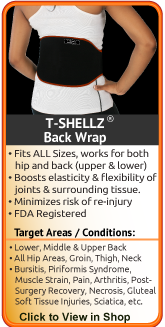 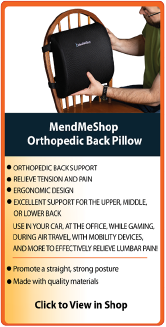  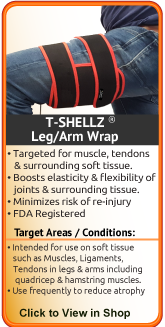    |

